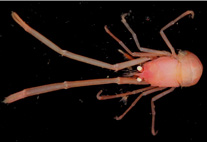Abstract
The development of the nymphal stages of Acanthagrion viridescens Leonard was examined under laboratory conditions. Based on specimens collected in Minas Gerais state (Brazilian Southeastern Region), we described and illustrated the last-instar nymph and illustrated the egg and other nymphal stages. The nymphs of A. viridescens went through 11 instars, each of them with an average duration of approximately 13 days. The combinations of the following characteristics distinguish the last-instar nymph of A. viridescens from congeners: prementum with 2+1 setae in each side; labial palp with six apical denticles; mandibular formula L 1+2 3 4 5 y a, R 1+2 3 4 5 y- a b; presence of trifid spine in the ventral distal region of the tibia and in the tarsi; format of the male and female gonapophyses; and the distinctive pattern of the tracheae in the caudal gills. This also represents the first record of this species from southeastern Brazil.

